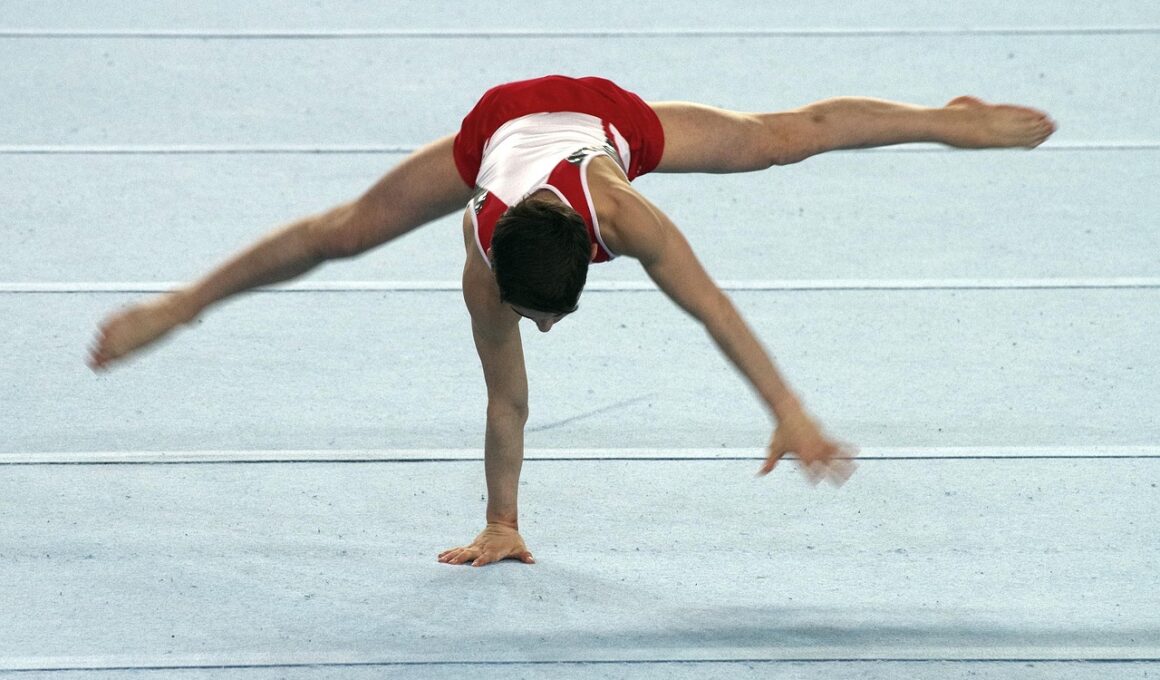Using Video Analysis to Improve Tang Soo Do Skills
Video analysis has emerged as a vital tool for martial artists looking to enhance their performance in Tang Soo Do. By reviewing recorded training sessions, practitioners can identify areas that require improvement and refine techniques effectively. One of the most significant benefits of video analysis is its ability to provide visual feedback, allowing students to see their movements and make adjustments accordingly. When combined with expert coaching, this feedback can lead to accelerated skill development. Coaches and instructors can utilize video clips to break down complex techniques into manageable components, enabling students to focus on specific elements of their performance. Furthermore, analyzing videos can help to reinforce proper forms and stances, essential in Tang Soo Do practice. Creating a library of recorded sessions can also track progress over time. By viewing their former performances, practitioners gain insights into how they have evolved and the areas that still need work. Utilizing video tools, athletes can also foster accountability within their training routine. As they review their efforts, students often become more motivated to maintain consistency in practice.
Using video analysis for training in Tang Soo Do offers measurable advantages beyond mere observation. For instance, practitioners can compare their movements to those of accomplished martial artists. This comparison allows students to recognize the intricacies that might enhance their execution of techniques. In particular, aspects such as timing, rhythm, and precision in punch and kick execution can be critically assessed when viewed on screen. Additionally, video annotations and coaching notes can systematically address common pitfalls or mistakes observed during performance. The ability to slow down and review specific segments further aids in understanding various techniques, building a cohesive skill set. Moreover, the inclusion of analysis can help practitioners prepare for competitions, as they can study opponents’ movements and develop counter-strategies. Video analysis can serve as a powerful complement to traditional forms of physical training. It can capture subtle nuances that might otherwise go unnoticed during training. By obtaining a visual representation at their own pace, Tang Soo Do artists can implement changes and measure improvements through systematic observation.
Practical Implementation in Training
For practitioners aiming to incorporate video analysis in their Tang Soo Do training, the process begins with the right equipment. Using a tripod to keep the camera steady, ensures a clear, undistorted view of the techniques being performed. Mobile devices offer convenient options; however, investing in a quality camera will yield better analysis due to improved resolution. It’s advisable to record different angles, capturing various perspectives of kicks, stances, or forms. Once the footage is collected, the next step involves reviewing the clips without editing to absorb initial impressions. Afterward, practitioners should utilize video editing software, which can help annotate and highlight specific skills while providing comparative analysis. Tagging segments can facilitate easier reference for future study sessions. Moreover, it is crucial to share recorded sessions with fellow practitioners and instructors for collaborative feedback. Engaging in group reviews promotes a community learning experience. As weaknesses are identified, personalized objectives can be designed to better tackle specific goals in training. Implementing this structured approach can significantly enhance skill development strategies for all levels of Tang Soo Do students.
Furthermore, investing time in video analysis not only aids martial artists in Tang Soo Do but can also contribute to psychological growth. By observing their performances, individuals become more aware of their emotions and responses during practice. Heightened self-awareness often results in a better understanding of how they handle pressure and stress during competitions, which is invaluable. The improvement of mental fortitude as students engage with technology provides a unique perspective on their journey. This capacity for introspection encourages artists to set goals more deliberately, aligning emotional responses with their physical practice. Coupling video analysis with physical training allows students to explore how their mindset impacts performance. As students review their path, they can recognize the importance of consistency and dedication. Thus, the journey often transitions beyond skill mastery, eventually integrating aspects of psychological resilience that enhance performance. These revelations foster determination, providing the motivation needed to push boundaries and attain peak performance levels. Ultimately, integrating technology into training not only sharpens skills but cultivates a robust mindset essential for success in Tang Soo Do.
The Role of Feedback in Skill Development
Incorporating feedback from video analysis into Tang Soo Do practice strengthens the learning process drastically. Constructive criticism from instructors can be coupled with observed footage, providing a solid foundation for effective communication. By analyzing videos together, students clarify expectations and identify areas for improvement more precisely. Furthermore, the nature of video analysis builds trust among peers and instructors, encouraging honest discussions about performance. Such transparency creates an environment that fosters growth and improvement. Feedback tends to be more impactful when it is visualized, as students can directly link verbal guidance to the actual execution they see. Pairing video insights with instructor comments leads to actionable objectives for practice sessions. Additionally, the feedback can reinforce intrinsic motivation, inspiring practitioners to make measurable progress. Furthermore, the recordings act as documentation of progress over time. Regular reviews can elevate artists’ confidence when they physically recognize the advancements they have made. This ongoing interaction between feedback and video analysis creates a dynamic loop of continuous improvement in techniques and forms.
Beyond personal improvement, video analysis also has implications for community and group training within Tang Soo Do. Sessions where students analyze performances together can create camaraderie and mutual support. Watching and discussing a variety of techniques encourages shared learning, which can enhance everyone’s skill development. Group analysis promotes a deeper understanding as practitioners exchange strategies, insights, and tips for improvement. This collaborative aspect facilitates varied perspectives, as different students may notice things others overlook. These sessions nurture an environment where individuals feel valued and encouraged. Additionally, when students share discoveries, it fosters a culture of continuous learning and curiosity. In group settings, emphasizing collective accomplishments can create a positive competitive spirit, which spurs additional growth. Observing others can often validate their self-assessment and manifest the criteria for excellence. Such positive interactions within the training community can further motivate practitioners toward success—both individually and collectively. Consequently, establishing a routine of group video analysis can be extremely beneficial in enhancing Tang Soo Do training overall.
Conclusion and Future Directions
The future of training in Tang Soo Do is undeniably intertwined with the advancements in video analysis technology. As access to filming capabilities increases and editing software becomes more user-friendly, the potential for progress in martial arts training expands drastically. Students can rely on various online platforms to streamline the sharing of videos. This increased accessibility enables practitioners to engage in broader discussions about techniques, philosophy, and training methodologies. Engaging with the global community can expose students to diverse practices, blending insights from various approaches. It is essential to remain adaptable and integrate innovative tools into training. Embracing this technology can facilitate sharing valuable knowledge among practitioners around the world. Moreover, addressing advancements in machine learning and artificial intelligence offers potentially game-changing insights for Tang Soo Do training. By examining data-driven performance metrics combined with video analysis, practitioners of all levels will have unprecedented opportunities for improvement. As Tang Soo Do evolves alongside changing technologies and methodologies, the focus should remain on developing a comprehensive approach that balances tradition with modern tools.
In conclusion, integrating video analysis into Tang Soo Do training not only refines physical techniques but fosters a comprehensive overview of practitioners’ overall performance. The myriad advantages discussed throughout this article illustrate how video analysis can enhance individual training, promote group dynamics, and support psychological resilience. From initiating the process with basic equipment to collaborating with peers and coaches, this approach identifies strengths and areas needing improvement. Engaging regularly with video footage allows Tang Soo Do enthusiasts to reflect on their growth as martial artists. By nurturing a culture of continual learning and exploration, practitioners will undoubtedly elevate their skills while reinforcing the essence of Tang Soo Do. Ultimately, the fusion of tradition with modern technology sets a strong foundation for the future of martial arts training.


